26 things that are cheaper this year
What's becoming more affordable in 2024?

Patti McConville/Alamy
Finally some good news for consumers: inflation is falling and while prices remain generally high, we'll soon be paying less for a variety of goods and services.
From plane tickets to tuna and solar power to second-hand cars, read on to discover which things are getting cheaper in 2024. All dollar amounts in US dollars.
Plane tickets

06photo/Shutterstock
Fed up of paying through the nose for plane tickets amid the post-pandemic tourism boom? Travellers can now breathe a sigh of relief.
According to data from the US Bureau of Labor Statistics, US airfare prices were down 6% in January compared to the previous year and had fallen 15% from a decade ago. What's more, research from American Express suggests prices for certain international routes are predicted to drop 12% this year.
Thanks to increased competition and higher passenger volumes, this trend is playing out in other markets too. Jetsetters can soon expect to pay less in the UK, Canada, and Australia, where Flight Centre Travel Group has described the price drops as “huge”.
Mortgages
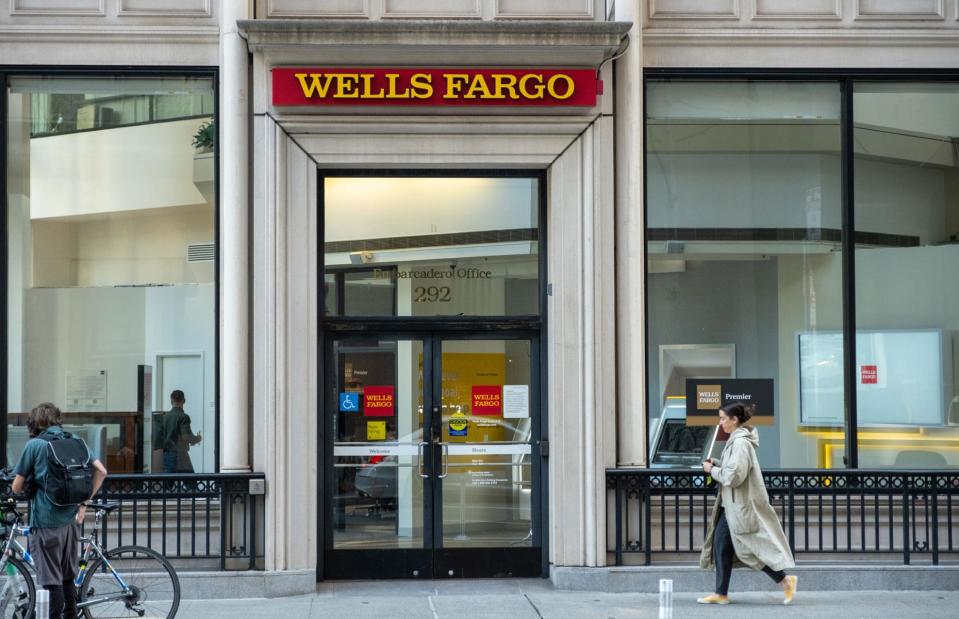
Larry Zhou/Shutterstock
Mortgage rates are now falling in several countries. While interest rates remain high across numerous nations, other factors such as easing inflation, buoyant bond markets, and subdued housing market activity are leading to lower rates around the world.
Rates in the US have fallen almost 0.25% over the past few weeks, while those in the UK are expected to drop below 4% within weeks. Aussie mortgage rates are yet to fall but ratings agency Moody's expects the Reserve Bank to cut interest rates twice this year, which could result in substantial savings for homeowners.
Home prices in many areas

Nathan Stirk/Getty Images
To the dismay of homeowners and the delight of first-time buyers, home prices are also falling in many areas. In the US, they've dropped in most of the nation's 50 largest metropolitan markets (as per real estate marketplace Zillow) while across the pond, UK house prices were down 0.6% in January compared to the year before. And despite a modest rise over the past couple of months, they're expected to fall by as much as 3% in 2024, according to Savills.
Moreover, prices are dropping in almost all German cities and are on a downward trajectory in certain parts of Canada and New Zealand. Condo resale prices in Singapore have slid to boot, and in Hong Kong, home prices are at a seven-and-a-half year low.
Real estate commissions

incamerastock/Alamy
Commissions on property sales have plunged in the UK in recent years and the country now boasts some of the world's most affordable estate agency fees, averaging just 1.18%. Rates in other countries including Australia have fallen too.
But the most marked reductions are likely to be seen in North America. A game-changing settlement recently agreed in an antitrust case against the National Association of Realtors (NAR) heralds the end of the standard 6% fee, and should make buying and selling a home in the US a lot more affordable. Canada could also see large fee reductions as a similar class-action lawsuit proceeds through the courts.
Groceries

Natalia Deriabina/Shutterstock
In what will come as an enormous relief to many, global food prices fell for the seventh consecutive month in February. That's according to the most recent update of the United Nations' FAO Food Price Index, which is the benchmark for the world's food commodity prices.
The drop is being driven by decreasing prices for cereals, which is offsetting price rises for other key food commodities such as sugar and meat. But not all meats are becoming more expensive...
Pork

Adamlee01/Shutterstock
While meat is increasing in price overall, pork prices have actually been falling across a slew of markets, including China, the US, EU, and UK. This trend is being driven by declining demand for the meat, as well as cheaper energy and feed prices.
The potential downside is that prices could end up rising in the near future as farmers cut back on their supply. This is already happening in the UK, where pork production is reportedly dropping.
Tuna

Matthew Horwood/Getty Images
The global price of skipjack tuna – the most heavily fished tuna variety – has dropped by 35% since last June according to the ATUNA Index, which has tracked prices since 1995.
The cost of the coveted bluefin tuna is also falling in Japan, the key market for the premium fish. Demand for both cheaper and more expensive varieties is subdued, while improved catches have resulted in an oversupply of the fish, hence the more affordable prices.
Natural gas

Vova Shevchuk/Shutterstock
Natural gas prices skyrocketed following Putin's illegal invasion of Ukraine in 2022, leading to eye-watering bills for consumers in multiple countries. But prices for the commodity have since eased spectacularly following their peak two years ago.
The mildest winter on record, combined with booming production, means natural gas prices in the US have sunk to a near three-decade low, as reported by the Financial Times. Meanwhile, the price per therm in the UK fell to 94 cents (74p) in January, down from the peak of $4.50 (£3.56) in August 2022. Last year, wholesale natural gas prices fell by 16.4% in Canada and a whopping 43% in Australia.
Electricity

Sunshine Studio/Shutterstock
Likewise, electricity prices are falling in many countries. Drops in wholesale natural gas and electricity prices in the UK have prompted regulator Ofgem to lower the household energy price cap by 12%. Prices are markedly lower elsewhere in Europe too, while wholesale costs in Australia fell by as much as 64% in 2023.
That said, prices are falling less dramatically in the US, where the US Energy Information Administration expects 2024 electricity costs to be close to (or slightly lower than) the costs consumers saw last year. And spare a thought for the people of Alberta, Canada, who saw their electricity bills more than double between January 2023 and January of this year.
Electric vehicles

Sjoerd van der Wal/Getty Images
In the market for an electric vehicle (EV)? You'll be pleased to learn prices are coming down big-time – and as electricity prices fall, snapping one up seems like a no-brainer.
Chinese EVs are flooding the West even as supply exceeds demand, while a plethora of government incentives and discounts are on offer to encourage people to make the switch from diesel or petrol. This means competition is hotting up and this is leading to much lower prices across the board.
EV batteries

NHAC NGUYEN/AFP via Getty Images
Underpinning the fall in EV prices is the remarkable drop in EV battery costs.
According to a recent Goldman Sachs analysis highlighted by CleanTechnica, EV battery prices are plummeting, thanks in part to lower metals costs. In fact, Goldman Sachs expects prices to decrease by an impressive 40% through to 2025, meaning EVs could cost the same as internal combustion engine cars by next year.
Lithium

Phil Degginger/Alamy
Critical metals that are used to build EV batteries have indeed become considerably cheaper.
A major component of EV batteries, the price of lithium has nosedived by more than 80% over the past year. The price drop is being attributed to increasing supplies of the metal – a result of the slowdown in EV and consumer electronics sales in China (and general slump affecting China's economy), as well as the disappointing uptake of EVs in the US.
Nickel
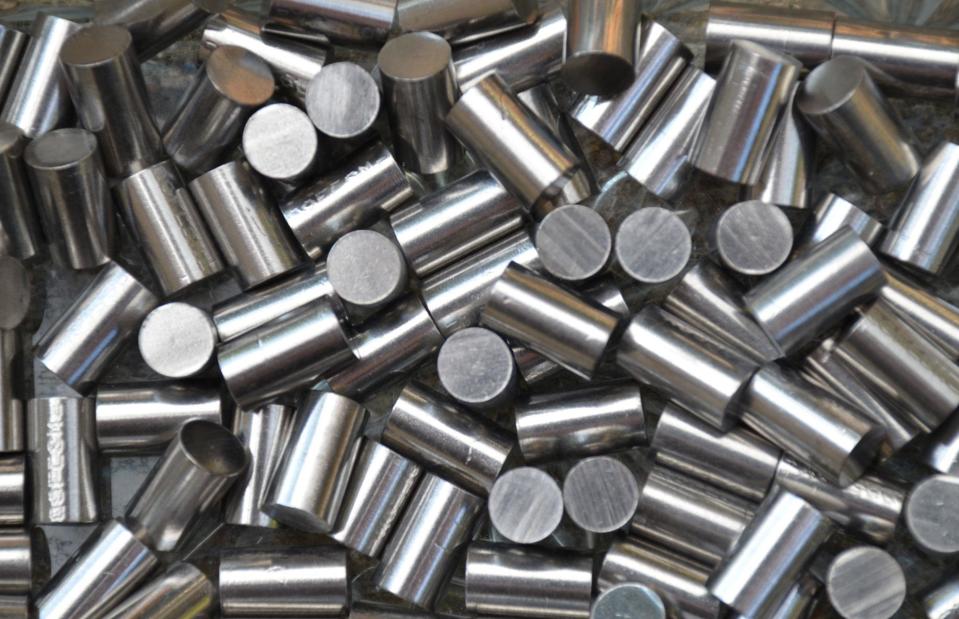
Choc'art/Shutterstock
Similarly, the price of nickel, which is also a crucial component of EV batteries, has fallen by more than 40% over the last year.
The reason? As with lithium, there's simply a massive glut of the metal. Plus, cheap supplies of the critical mineral from Indonesia are putting further downward pressure on prices, which are expected to remain low for some time yet.
Used cars
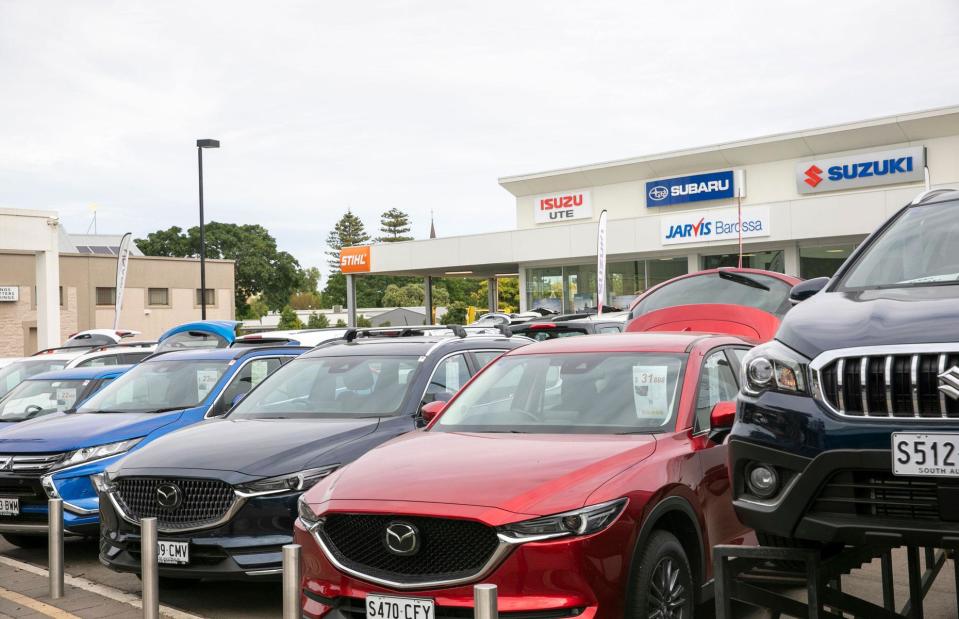
martin berry/Alamy
Used car prices are tumbling as supply exceeds demand – great news if you're planning to buy a second-hand vehicle, but not so great if you have one to sell. That said, cheaper prices for new EVs may offset your losses somewhat should you decide to upgrade from an internal combustion engine car to an all-electric or hybrid.
In the US, used car prices have fallen 13.8% this year as they continue their march to pre-pandemic levels. Similar drops are occurring elsewhere, including in the UK and Australia, with all-electric cars seeing the largest decreases.
Second-hand Teslas
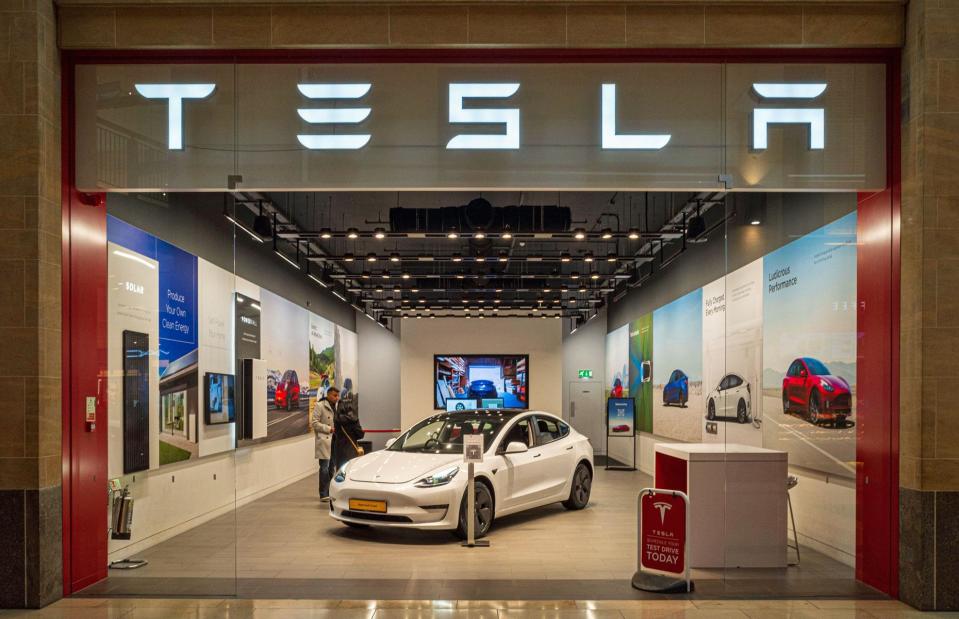
Robert Evans/Alamy
Certain marques are depreciating in value a lot more than others.
Used Teslas have crashed in price over the past couple of years, with the firm's aggressive price drops for its new vehicles fuelling the downward spiral. The trend extends to all Tesla models, including the Model 3 sedan, with the price of a used car down almost 30% in the US over the past year. And the resale market for second-hand Cybertrucks is pretty much in freefall.
Second-hand Range Rovers

ZarkePix/Alamy
Other models are depreciating in value for different reasons.
Take the Land Rover Range Rover. Its typical resale price has plummeted in the UK purely because the vehicle is so easy to steal. Land Rover is the UK's most stolen brand – almost one in 100 was stolen in 2023 according to official figures – and Range Rovers are now nearly impossible to insure in London, reports The Telegraph.
Solar power
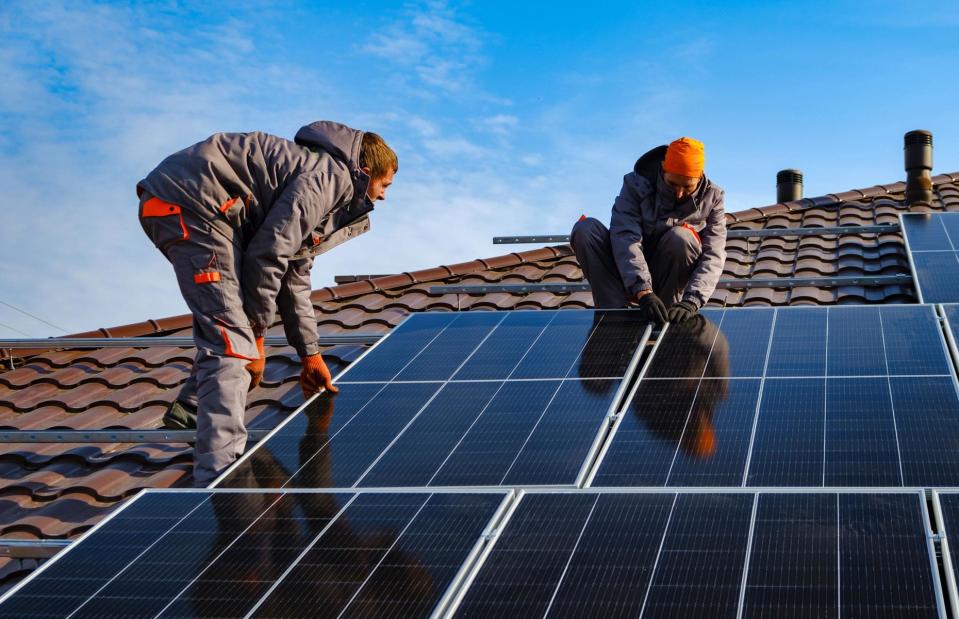
AlyoshinE/Shutterstock
Over the past decade or so, the cost of solar power has dropped by as much as 87%, according to data from the Mercator Research Institute on Global Commons and Climate Change (MCC). And a current supply glut is further bringing down prices.
In terms of residential installation, the price has fallen by around 50% in the US since 2013, and by 60% in the UK since 2010, while in sunny Australia, costs have decreased by 10% over the past year alone. As pointed out by the International Energy Agency, solar power is now the cheapest form of electricity for utility companies to invest in.
Diamonds

Gregory Wrona/Alamy
The price of diamonds has fallen dramatically and further drops are likely.
The cost of the shimmery status symbol is being impacted by a perfect storm of factors, including falling demand in slumping China, the rise of lab-grown stones, the cost of living crisis in Western countries, and a lack of interest among Gen Z. Indicative of the downturn, industry leader De Beers reported a drop in revenues of 35% for 2023 and recently slashed prices by up to 25% in a bid to revive its business.
Platinum

Cor Laffra/Alamy
Platinum prices have also taken a battering over the past year or so, despite a deficit of the precious metal.
The reasons behind the fall are complex but include lower demand in the automotive industry, declining demand among investors who are increasingly flocking to gold as a safe-haven commodity, and the relatively steady supply of the metal thanks to recycling schemes.
Insulin in the US

Spencer Platt/Getty Images
More than seven million people use insulin in the US, but the strong demand hasn't stopped manufacturers from slapping it with a hefty premium. Fortunately, manufacturer Eli Lilly and Company has agreed to slash costs by 70% from May and cap the cost at $35 (£28) a month following action from the Biden administration.
Although the reductions will only apply to older insulin products, the move brings the typical price per vial – which has climbed to $100 (£79) in America – more in line with average costs per vial in Canada and the UK. These stand at just $12 (£9.50) and $7.52 (£6) respectively.
AI

Tero Vesalainen/Shutterstock
Artificial intelligence (AI) is becoming ever more ubiquitous and prices for the controversial technology are falling fast.
It's almost a given that costs of building out AI will fall further as computer power improves, as recently predicted by Jensen Huang, CEO of chipmaker Nvidia. But with cheaper AI comes greater risks the tech will be used for nefarious purposes, a warning that has been sounded by AI researchers in the US and UK.
There are also major concerns that generative AI deepfakes, which are more affordable than ever, could impact upcoming elections. By way of example, a fake Joe Biden audiocall that hit headlines in February cost just a dollar to produce, according to the New Orleans resident who claims to have made it.
OLED TVs

Patti McConville/Alamy
As confirmed by the likes of Tom's Guide, TechRadar and T3, organic light-emitting diode (OLED) TVs have never been cheaper.
Only a few years ago, you'd have been hard-pressed to find one of these premium TVs for under $2,000 (£1.5k). But today, there are plenty of decent models out there for less than $1,000 (£790), and if you're in the US and feeling lucky, you can potentially score a 48-incher for around $600 (£475).
According to What Hi-Fi?, costs are falling because increased demand for OLED TVs has made the necessary panels much cheaper to produce. Back in 2022, LG's OLED factory was apparently operating at just 50% of its full capacity, meaning costs for the finished product were hiked as manufacturers struggled to turn a profit. Now, with supply and demand more stable, prices are expected to continue dropping over the next three years.
GPUs/Graphics cards

Adnan Ahmad Ali/Shutterstock
The great graphics processing unit (GPU) shortage is finally over – excellent news for gamers, crypto miners, and others in need of graphics cards as it means prices are stablising.
Only a year ago, getting hold of a cheap GPU was a challenge, but now retailers are selling the tech at more affordable prices. Older graphics cards in particular are coming down in price, with new releases such as the Nvidia RTX 40-series Super refresh pushing down their costs.
According to Digital Trends in February, GPUs that had previously cost $1,000 (£790) were being sold for $950 (£760), while $800 (£640) units were suddenly available for $720 (£570).
Super-pricey fine art

amer ghazzal/Alamy
Mega-wealthy art collectors have apparently been bagging bargains galore; the cost of art selling for more than $10 million (£8m) at auction fell by 40% last year.
That's according to the eighth annual UBS/Art Basel Global Art Market Report. The report also revealed the global art market shrank by 4% last year to $65 billion (£51bn) as investors tighten their belts, mainly due to factors including elevated inflation and high interest rates. Still, as inflation softens and interest rates fall, the higher end of the market could very well pick up soon. Maybe buy that masterpiece while you can...
Steel
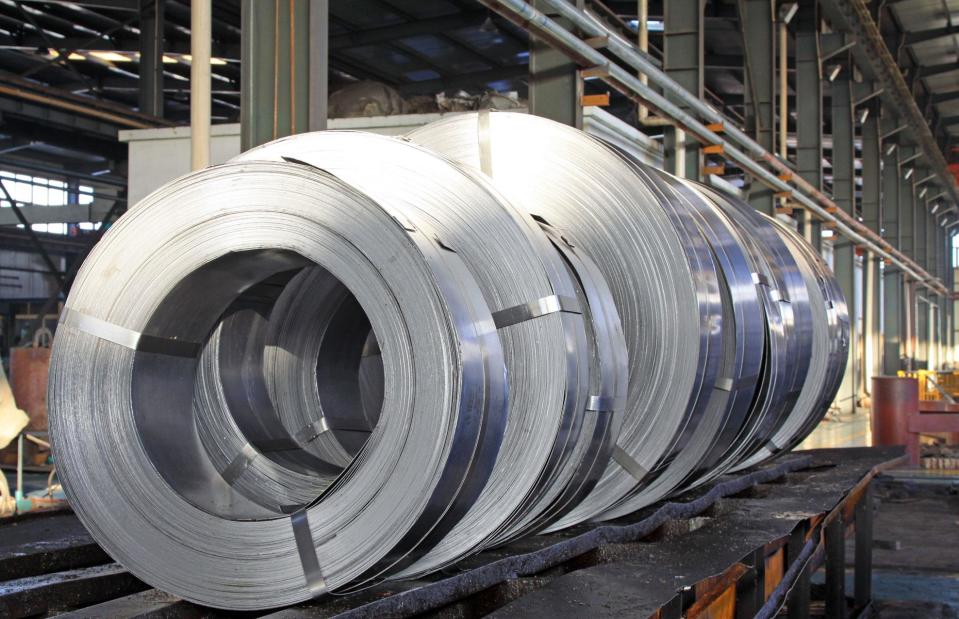
Yuangeng Zhang/Shutterstock
Iron ore, which is used to make steel, has seen its price slip this year amid the economic slowdown in China and stockpiles are increasing at the country's major ports. With the real estate business of the People's Republic in the doldrums, Chinese demand for the commodity is weak and prices have dropped by 30% since the beginning of 2024.
Needless to say, the lack of demand for iron ore doesn't bode well at all for the global steel industry, with the trend recently underscored by the Financial Times.
Global prices for hot-rolled steel sheets have been slipping over the past couple of months as lower demand for steel in China and elsewhere sets in. The North American market has suffered the biggest losses, with prices down 27% compared to the start of the year.
Scrap metal

oneSHUTTER oneMEMORY/Shutterstock
The flagging global steel market is having a marked effect on scrap metal prices, which are trending downward according to Auto Recycling World.
Turkish steelmakers, which are major players in the scrap metal market, halted purchases in February. This was partly a consequence of weak demand in China, while scrap metal costs are especially low in the US, where prices per ton are expected to drop by up to $50 (£40).

 Yahoo Finance
Yahoo Finance 